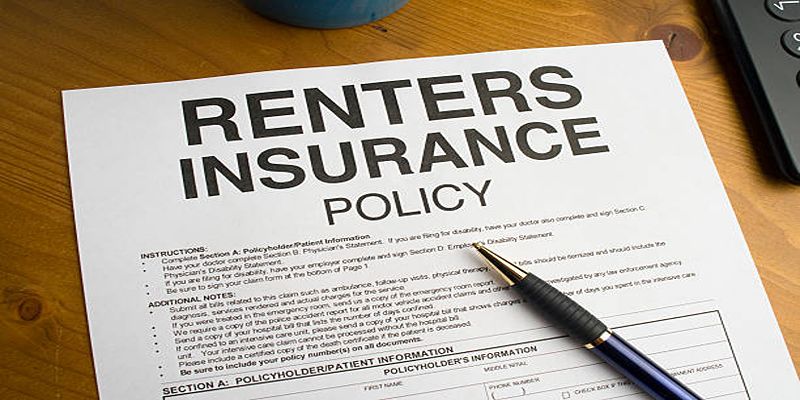Renting your dream apartment is exciting, but it comes with responsibility. Protect your belongings and peace of mind with renters insurance. While it might seem overwhelming, the process is simpler than you think. This guide covers everything you need to know, from why renters insurance is important to step-by-step application tips. Whether you’re new to it or ready to apply, this guide will help you find the right coverage.
Why Renters Insurance Matters

Before jumping into the application process, it’s important to understand why renters insurance is a valuable investment.
- Protect Your Belongings: Renters insurance safeguards your personal possessions in case of events like theft, fire, or water damage. Think about the cost of replacing your electronics, furniture, or even clothing. Covering these expenses out-of-pocket can add up quickly.
- Provide Liability Coverage: Accidents happen. If someone gets injured in your rental unit or if you accidentally cause damage to the property, renters insurance can help cover liability costs.
- Cover Additional Living Expenses (ALE): If a covered event forces you to temporarily move out of your rental, renters insurance may help pay for additional expenses like hotel stays or dining out.
- Affordable Peace of Mind: Compared to other types of insurance, renters insurance is relatively cost-effective, often costing less than $20 a month depending on your coverage needs.
Step 1 Understand Your Lease Requirements
Before shopping for renters insurance, check your lease agreement. Some landlords or property management companies require tenants to have renters insurance. If this is the case, pay attention to any specific coverage minimums they may require.
If renters insurance isn’t mandated, it’s still a smart idea to get coverage. No one can predict accidents or disasters, and it’s better to be prepared than face financial losses.
Step 2 Take Inventory of Your Belongings
To determine the amount of coverage you need, start by taking an inventory of your personal possessions. Go through every room in your apartment and list your items, along with their estimated value. Include big-ticket items like electronics, appliances, furniture, and jewelry, as well as smaller essentials like clothing and kitchenware.
There are apps and online tools that make this process easier, or you can create a spreadsheet on your own. Having a clear inventory will help you decide the level of coverage you need and simplify the claims process if you need to use your insurance.
Step 3 Decide On the Coverage You Need
Renters insurance typically provides three types of coverage:
- Personal Property Coverage: This covers the cost to repair or replace your belongings in the event of a covered incident. Be sure to choose coverage that reflects the total value of your items.
- Liability Coverage: This protects you if you’re legally responsible for injuries to others or damage to their property. A standard policy often includes $100,000 in liability coverage, but you can increase it based on your specific needs.
- Additional Living Expenses Coverage (ALE): This helps with costs if you need to live elsewhere temporarily due to a covered event, such as a fire.
Some policies also offer optional add-ons, like coverage for high-value items (e.g., engagement rings) or identity theft protection.
Step 4 Research and Compare Providers
Not all renters insurance policies are created equal. Start your search by identifying providers with strong reputations for customer service and fair claims handling. Some companies specialize in renters insurance, while others offer it as part of a suite of insurance products.
Compare quotes from at least three providers. When evaluating a quote, take into account:
- Coverage limits
- Deductibles (the amount you pay out-of-pocket before your insurance kicks in)
- Premiums (the cost of your policy)
Many providers offer discounts if you bundle your renters insurance with other policies like auto insurance, so don’t forget to ask about savings opportunities.
Step 5 Apply for a Policy
Once you’ve chosen an insurance provider, it’s time to apply for a policy. You’ll generally need to provide the following information:
- Your full name and contact details
- Address of the rental property
- Details about the property, including its size and safety features (e.g., smoke detectors, security systems)
- A list of the belongings you want to insure, along with their estimated value
Most renters insurance applications can be completed entirely online in under 30 minutes. Alternatively, you can apply over the phone or in person with an agent.
Step 6 Review the Policy Before Finalizing
Before finalizing your policy, carefully review the terms and conditions. Pay close attention to:
- The specific events covered by your policy (e.g., fires, theft, water damage)
- Any exclusions or limitations (e.g., coverage for floods or earthquakes may require an additional rider)
- Policy deductibles and premiums
Understanding the fine print ensures there are no surprises when you need to file a claim.
Step 7 Finalize and Set Up Payments
After reviewing and agreeing to the policy, you’ll finalize your purchase. Most insurance companies allow you to set up recurring monthly payments or pay your premium in full annually. Be sure to keep digital or physical copies of your policy for future reference.
Bonus Tip Keep Your Policy Updated

Life changes may require adjustments to your renters insurance policy. For example:
- If you upgrade to a new TV or laptop, update the value of your possessions.
- If you move to a new rental property, notify your insurance provider.
By keeping your policy up-to-date, you can ensure you’re always adequately covered.
Final Thoughts
Renters insurance is a small investment that offers big protection. By following this step-by-step guide, you can secure a policy that fits your needs and gives you peace of mind. Whether you're protecting your belongings from unexpected events or covering yourself in case of liability, renters insurance ensures you're prepared for whatever comes next. With a clear inventory and knowledge about the coverage you need, finding the right renters insurance will be smooth and stress-free.












